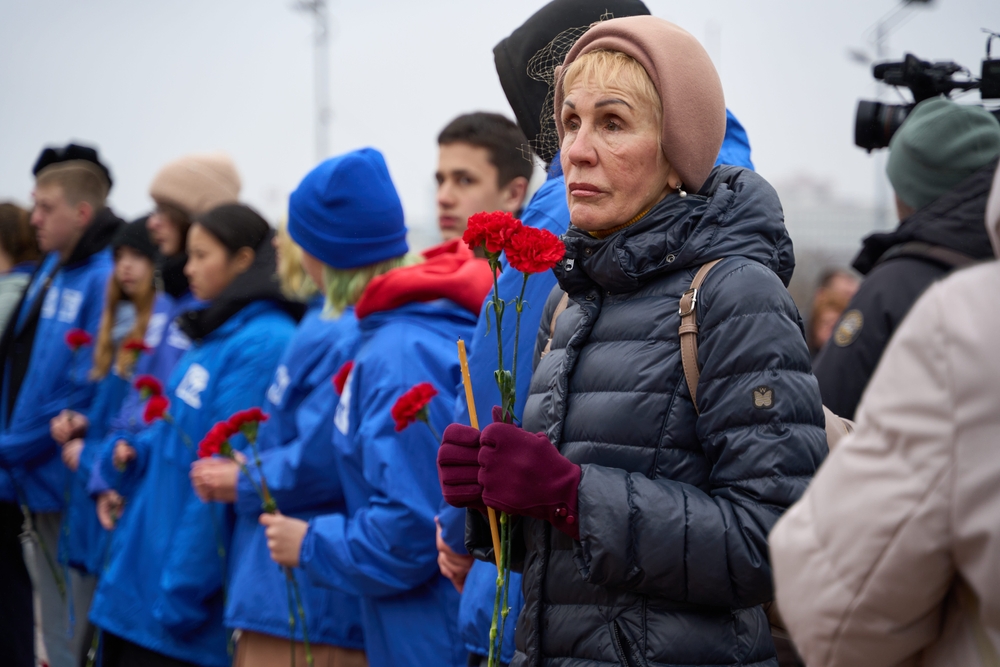by Giuliano Battiston*
As the four alleged perpetrators of the Crocus City Hall attack were jailed by a Moscow court for two months on remand, the Russian Federation lowered its flags to half-mast on Sunday in a day of mourning after at least 137 people, including three children, were killed and more than 150 wounded in an automatic weapons attack during a rock concert at the Crocus City Hall theatre outside Moscow. President Vladimir Putin declared Sunday a day of national mourning after vowing to track down and punish all those responsible for the massacre.
The bloody terrorist attack is a resounding blow to the Islamic State, but it is not all that unexpected. Those who are surprised that Russia is the target have long since lost sight not only of the propaganda of the ‘central’ Islamic State and its regional branches, but also of its military activities, and must have forgotten an important piece of recent history. Recent history, propaganda and military activities – according to all the scholars who have continued to study them even after the fall of the ‘caliphate’ built in Syria and Iraq, and the physiological inattention of the media – tell us that Russia is a central, priority enemy. The infidel, orthodox Russia, the Russia of Putin and his bloody wars in Chechnya, the repression of Islamists in Dagestan, in Ingushetia, inside and outside the borders of the Federation, Russia allied with Syria’s Bashar al-Assad and bombing jihadist strongholds in Syria, or more recently contributing to the campaign against Islamic State in Mali and Burkina Faso: Russia as a threat to Islam.
Putin, whose security apparatus is in disarray, is trying to take advantage of this by not mentioning the Islamic State and blaming the Ukrainians. But this is a deception. The focus of our attention should be elsewhere. To the local branch of the Islamic State, the “Caucasus Province”, or more likely the “Khorasan Province”. The name, like much jihadist propaganda, refers to the glory days of yore, to historic Khorasan, a vast area that covered what is now Iran, Afghanistan and parts of Central Asia. Formed in late 2014 and early 2015 by mostly Pakistani militants, but also Central Asians and Arabs in the Afghanistan-Pakistan border region, the “Khorasan Province” was simultaneously suppressed by the Afghan government, the Americans who supported it, and the Taliban, who were still waging war against the collapsed republic in 2021 and had realised that these jihadists were a threat to their monopoly. But it was also an opportunity to get closer to America’s enemies.
It is no coincidence that the fall of the Islamic State’s main stronghold in Afghanistan, the Mamand Valley in the Achin district of the eastern province of Nangarhar, where on 13 April 2017 the then US President Donald Trump had dropped the most powerful non-nuclear bomb ever used in combat (11 tonnes on a complex of tunnels and quarries used by the Khorasan), took place in November 2019. Three months earlier, Washington and the Taliban had signed the Doha Agreement in the Qatari capital, a viaticum for their return to power.
Forced to abandon the territory it held in the east and north of the country, explains Antonio Giustozzi, author of the little-known book “Il laboratorio senza fine. Il ruolo dell’Afghanistan tra passato e futuro” (The role of Afghanistan in the past and the future), Khorasan then resorted to an urban guerrilla campaign and terrorist attacks to demonstrate the Taliban’s inability to guarantee security and undermine its legitimacy. The attacks subsided in 2023 but resumed in 2024. A few days ago, Islamic State claimed responsibility for an attack in Kandahar, the symbolic capital of the Taliban emirate. They were quick to condemn the Moscow massacre. But they could suffer a setback if the investigation points to Khorasan Province as responsible.
Moscow, like every other regional capital, guarantees the emirate, which still lacks official recognition, its diplomatic backing on one condition: that the Taliban act as a safety belt against the threat of Islamic State in the region. The Afghan Emirate claims credit for the “surgical repression” that has led to the destruction of Islamic State cells in major Afghan cities, but this may not be enough for Moscow. Moreover, there are those in the Taliban leadership who do not like Russia’s support for the same reasons that the global jihadists see it as a legitimate and priority objective. Meanwhile, some of the Tajik Taliban in the northeast have changed colours.
On the cover photo, a moment of mourning in Vladivostock (Photo Shuttelstock)
* Giuliano Battiston is the Editor-in-chief of the media outlet Lettera22
























